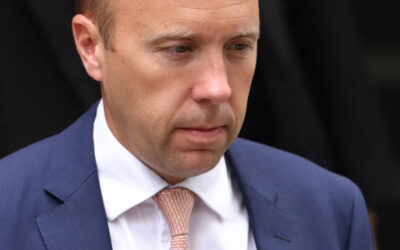Why is South Africa doing so badly?
5 February 2024
Ann Bernstein: It’s my great privilege and pleasure to welcome Professor Ricardo Hausmann to CDE. He is recognised across the world as one of the leading thinkers about growth strategy, and he is actively involved in helping many developing countries to grow their economies. Ricardo is a great friend of South Africa and someone who has influenced the thinking of many of our top civil servants, some politicians, business leaders, academics and many others. He has certainly had a very big impact on CDE for many years now.
Tell us about your involvement in South Africa, and how come you know so much about our country
Ricardo Hausmann: One of the big privileges of my life was that I chaired the international advisory panel for the Accelerated and Shared Growth Initiative of South Africa (ASGISA). I was asked in 2004 by Trevor Manuel to put together a team. We ended up writing 24 papers, each one with their own policy brief. I wrote the summary report, which we presented to Parliament in 2008, and I have been hooked on South Africa ever since. Thanks to CDE, I was able to come back to South Africa and work on issues of growth and inclusion for the last 30 months, and I am happy that I have been able to maintain an intellectual relationship with so many people in the country.
I have always thought that if South Africa succeeds, it will be scientific proof that humanity has great prospects, because you haven’t been dealt the best set of cards. So, if you can win the game, it will be a hugely positive message about what is possible in the world.
Ann Bernstein: How, in your view, is South Africa doing in terms of growth and inclusion, compared to other developing countries?
Ann Bernstein: Why are we doing so badly?
Ricardo Hausmann: When I got involved with ASGISA between 2004 and 2008, there was a sense of optimism, and that things were improving, but something happened over the last 15 years that has turned that around. However, even back then there were problems. I think that some causes of underperformance are more recent and others are deeply structural.
In the report Growth through Inclusion, which my team at the Harvard Growth Lab and I produced, we essentially put forward two classes of explanation. The first is what we call a collapse in state capacity. Around 2000, South Africa was a fairly complex economy, meaning that it incorporated, relatively speaking, a lot of knowledge within its production structures. In that respect South Africa was ranked very close to China in the complexity indicators that the Harvard Growth Lab compiles. Since then, the two countries have diverged dramatically. South Africawent from being 47th in 1995 to being 70th in the rankings, so it has deteriorated significantly. China, in contrast, went from 46th to 17th.
For example, even though the government is very committed to manufacturing, and the Department of Trade, Industry and Competition (DTIC) has a big commitment to industrial policies to assure the growth of manufacturing, employment in manufacturing declined dramatically even by international standards. There has been a general trend of deindustrialisation and falling relative employment in manufacturing across the world. However, the speed at which this has happened in South Africa since the global financial crisis of 2008 is orders of magnitude worse than anywhere else.
We found very strong evidence that this decline was strongly linked to the collapse in electricity provision.
Electricity was critical for South Africa because a lot of the country’s comparative advantage was based on the availability of cheap, reliable electricity. When we look at the export basket of South Africa, we find that it is one of the most energy intensive in the world, so when the government malfunctions on electricity, it hits economic activity especially hard. We show that the more energy-intense the manufacturing activity, the worse that industry did over the last 15 years.
In addition, the state has trouble managing its natural resources, in terms of the ability to give mining concessions and regulate them. As a result, during the 2000s, South Africa was the only mining country that went through the commodity supercycle without a mining boom. Even though it had the resources to do it, the legal and regulatory frameworks were not there, and South African companies were investing in mining elsewhere because they found the business ecosystem in those places better than they were in South Africa.
It has now gotten worse. Not only do you have constraints on investment because of poor management of property rights, but now mining companies cannot take natural resources out of the ground because they do not have the electricity or rail to access export markets. South Africa is having a particularly bad 2023 in tax revenues, and to a large extent that has to do with the bad performance of mining companies, which is largely caused by the collapse in state capacity.
The other more structural element behind South Africa’s poor performance is something we call spatial exclusion.
Those are essentially the two broad classes of explanation. We think the national discussion about the way forward should focus on these two important issues.
Ann Bernstein: Let’s focus first on the state. As you say, most South Africans feel that the state is collapsing around us. I often feel that the government or the President has failed to provide an accurate diagnosis of South Africa’s many crises. Now, you always stress the importance in any situation of doing a thorough diagnosis. So, what are the causes of state collapse in South Africa today? I know you identify four, so perhaps we could go through each one, and why you think they are important.
Ricardo Hausmann: The four causes of collapsing state capacity are: overburdening of state organisations with goals beyond their core missions, gridlock on key decisions, ideologies that limit the full use of society’s capabilities, and systems of political patronage.
The first cause stems from the idea that the state can be used to restructure society at very low cost. Given the
restrictions that black people faced under apartheid, some form of what Americans call ‘affirmative action’ was called for. A large set of policies were adopted to achieve black economic empowerment and more broadly to change the balance of power in society.
These policies changed the way the government procured its inputs and the way it hired the talent it needed.
The evidence suggests that these policies undermined the capacity of public entities to operate effectively. It has led in some instances to what Lant Pritchett calls ‘premature loadbearing’, where state institutions – municipal governments, for example – were given too many responsibilities or asked to operate under too many constraints.
The consequence is that rather than just impose some extra costs on organisations, it caused them to collapse. For example, preferential procurement and recruitment geared at transforming society, instead led to dysfunction, with huge costs to society, especially the most vulnerable. The South African Local Government Association (SALGA) writes bitterly about how preferential procurement has limited local governments’ capacity to do the things they were tasked to do.
Second is the gridlock that has been most visible in the electricity sector since loadshedding started in 2007. We tried to find another electricity crisis in the world that lasted this long, but we could not find any. Other countries, like Chile and Colombia, have had electricity crises, but once the political system realises that there’s a shortage of electricity, decisions and actions are taken, and three to five years down the road there is ample electricity again. In South Africa, it took until the summer of 2022 for the state to lift the prohibitions on the private sector investing in generation and allowing metros in good standing to procure electricity directly from the market.
When society has a problem, a decision must be made. But in this instance, some people are pro-coal, some are pro-green, some are pro-state, some are pro-market, resulting in gridlock and decisions not being made.
The reason why gridlock is overcome in other societies is that if you do not fix the problem, you lose the next election. Therefore, the fear of losing the next election forces the political parties in power to reach an agreement.
Democracies usually generate a sense of urgency around salient issues. But in South Africa, the hold of the ANC on power has meant that it is less responsive to this mechanism. Hence the lack of either urgency or the resolution of gridlock.
The third cause of state collapse is the ideology that wants to see the state taking the lead in the economy and elsewhere. Paraphrasing Deng Xiaoping, I see this ideology as caring more about the colour of the cat than whether the cat catches mice. In other words, wanting to see not just electricity being supplied, but wanting to see electricity being supplied by a state monopoly. That ideological view has prevented some pragmatic solutions to many problems. Society had the engineering capacity, the financial capacity, the knowledge, etc. to fix the electricity problem, but ideology prevented the state from allowing that to happen.
The fourth cause of state collapse, which I guess is the most discussed in South Africa, is corruption/state capture/political patronage. In an environment where you are using the state to transform society, by, for example, using procurement rules, it becomes likely that people who are not interested in the public good will be attracted into political processes. I love this term that South Africans have invented, ‘tenderpreneurship’, which ended up becoming entrenched and corrupting both the state and the party.
Premature loadbearing, gridlock, ideology and corruption are the four things undermining the capability of the state that we identified in our report.
Ann Bernstein: You once said that South Africa has spent too much time making the top of our society blacker rather than the bottom of our society better. In the report, you say that although we talk a lot about the strategies, instruments and goals of empowerment, and the inclusion of millions and millions of South Africans, it is not working. Tell us what is not working, and why. Is there a better way to think about including all the unemployed and all the people living in poverty in our country today?
Ricardo Hausmann: The way in which the discussion is framed in many societies is to say: “We are unequal therefore we need to redistribute income.” But we at the Growth Lab are saying that we should look at the sources of that inequality, and we find that at the heart of that inequality is an enormous unevenness in productivity. South Africa has a massive percentage of people who are outside of the labour force and are therefore excluded. Their productivity, as a result, is minimal. Then you have other people who are working at extremely low productivity levels.
Productivity is not something that exists in individuals. It exists in organisations. Organisations make humans productive because there is a division of knowledge in an organisation. Some people know about some things, other people know about other things, and the organisation pulls those together and operates with more combined knowledge than what any of its individual members can marshal.
Therefore, participation in those organisations make members more productive. That points to the importance of bringing people together. The inequality in productivity in South Africa is a result of the fact that people are not empowered to participate in the organisations that make its members productive. We need to facilitate their inclusion.
What you find across South Africa is an enormous inequality in employment rates, which on average are incredibly low. There is a graph in the report that compares municipalities in South Africa with municipalities in Mexico. Mexico is a country that has a heterogeneous population. It has indigenous groups, where Spanish is not their first language. Some municipalities are very rich and many are not, some have a majority of indigenous populations. So, there is a lot of inequality in average incomes across municipalities, but there is a miniscule difference in employment ratios. All Mexican municipalities have employment ratios very similar to the top decile of municipalities in South Africa.
We think that if people were included in organisations, their productivity would go up, and if you have more South Africans working at higher productivity, then GDP would go up. That’s what we mean by ‘growth through inclusion’. It is because people are not included that output is not being generated, and because the people who are not included are poor, it results in very unequal outcomes.
Instead of focusing so much on redistribution to compensate people for their exclusion, we want to see investments to make sure that people get included. Inclusion is going to be a win for growth and a win for reducing inequality.
Ann Bernstein: Let me ask you a fundamental question that we at CDE certainly wrestle with, and I think many South Africans do, too. You have told us and we know the state is collapsing, but we need this state to reform to move forward as a society. What do you think about the relationship between states and markets? How do we move forward with such a weak state?
Ricardo Hausmann: I don’t think that the debate should be whether we need the state or the market. We need the state. We all agree that South Africa has a dysfunctional state, and we need to recover state capacity to make the task of development easier.
Exploring more complementarities between the state and the market is going to be essential for the recovery of the state. As my father likes to say: “Why make things difficult if you can make them impossible?” If you already have a weak state, it is best if the state leverages the capabilities of society, rather than try to use the state to take over those capabilities.
We see, for example, enormous potential in allowing more investment by others, whether it’s the private sector, metros or other forms of organisation, in the provision of electricity. In the resolution of infrastructure issues, we suggest that maybe the government owns the rail lines, but the rolling stock can be partly privately owned. We should be able to recover capacity faster that way. Drawing on and strengthening the capabilities of society while finding more complementarity between state and society, is the way forward.
Ann Bernstein: Let’s talk about spatial inclusion. You’ve said that our cities are rather unusual when you look at them, compared to other countries. Why is that?
Ricardo Hausmann: Since 2004, we have been trying to make sense of the South African labour market and its terrible performance. We have noted the history of conflictual relations, the relatively high minimum wages, the collective bargaining outcomes, strong unions, contract extensions and labour courts. These may all be contributing to the problem, and I do not want to ignore any of those discussions, but this time we paid particular attention to the time, distance, direct costs and opportunity costs of commuting.
What struck us is the shape of South African cities where public housing is built very far from where the jobs are.
This was the case intentionally at the time of apartheid, but it has remained the case over the last 30 years. Cities have very low densities in their centres and surrounding suburbs. In such very spread-out cities, the typical public transport solutions do not work. South Africa has copied bus rapid transit systems from Latin America, which were designed for a certain level of density. These systems allocate a dedicated line to a bus so that it doesn’t have to be stuck in traffic. For that to work, the lane has to be full of buses all the time, otherwise you are just restricting all the other traffic and you are not solving the transportation problem.
Many people won’t use the bus system because they don’t want to wait for it for 20 minutes, so they prefer to take a taxi, but taxis are a relatively costly form of transportation. The lack of density then means that not only do people have to travel long distances they also have to rely on costly forms of transportation. Employers, in turn, will have to compensate workers for those commuting costs. The only way to compensate workers is to raise their salaries sufficiently for them to spend that much on travelling to and from work. Those relatively high salaries make firms less competitive, which means they will have to hire fewer workers. This makes the structure of cities an important determinant of labour market outcomes.
We think this issue can be fixed by changing urban planning regulations, zoning restrictions, floor area ratios and density regulations, and by empowering people to build housing closer to where people want to live. Many informal settlements in South Africa have been built in better connected places, and people seem to prefer lower-quality housing that is better connected. RDPs, which are a declining species, predefined a plot building size, but did so in very faraway places. People say: “I don’t need such a large plot of land, I’d rather have the money,” so they do backyarding. They also keep looking for better located accommodation. That is what South Africans want. We say, let South Africans have what they want, which requires changes to urban regulations.
We need to increase the densities of cities, which in turn will generate a construction boom in areas where people want to live. That will generate jobs in the short run, and more competitive and inclusive cities in the long run. So, we think this is a win-win solution in several dimensions. We visited Jewel City in Johannesburg built by a company called DiverCity, and they have a vision of how higher density, well-located, multi-family housing with security and amenities that people want can be provided. I think there is a path forward that involves better urban development.
Ann Bernstein: As you’ve said, there is a big role for private sector investment. If the rules were right, the private sector could play a really big role in densifying our cities.
Ricardo Hausmann: Absolutely. City managers do not recognise that it is more efficient to provide services in denser areas, and the current regulations push the private sector to contribute to more sprawl rather than encouraging the private sector to invest in densification.
Ann Bernstein: For those who live in Johannesburg, Ricardo has taken CDE’s work much deeper, and further. We came up with this great slogan, which illustrates what he’s saying: It is far better to rent in Orange Grove than to own an RDP house in Orange Farm, far away from economic opportunity.
Let’s move to power generation, which is another area where you took a deep dive. What do you think of South Africa’s attempts to fix our electricity challenge, 15 years on? And how are we doing?
Ricardo Hausmann: The Electricity Regulation Amendment Bill was tabled in August 2023. I don’t know how far it is from approval yet, but there are many good things in there.
We worked with Operation Vulindlela over the period we conducted our research in South Africa. We are great fans of Operation Vulindlela. We think that they have the right mandate and the right spirit, although it’s taken much longer to get reforms going than I expected. My concern about South Africa’s electricity strategy is that we’re still thinking about it in emergency terms. What we need is a clear vision, because the clearer the vision going forward, the faster the investment.
There has been some liberalisation of generation, and there’s been a lot of generation activity. A real electricity market is not fully designed, limiting the supply response. The problem is that the system is very quickly going to run against transmission constraints: the more solar you put in, the more transmission and storage you will need.
There is no mechanism for the private sector to invest in either transmission or storage, meaning that Eskom can easily hold back the whole process.
Ann Bernstein: South Africa’s fiscal situation is another challenge, about which you know a great deal. I was
rather disconcerted in 2020 when you told me you were bringing the former governor of the Reserve Bank of Argentina to help you think about South Africa’s fiscal situation.
Is South Africa about to have a fiscal crisis, and what does that mean for the country and the average citizen?
Ricardo Hausmann: I am in awe of the National Treasury. It is a world-class institution. It has enormous capacity and is a very well-run place. It is really one of the country’s assets.
In 2008, Federico Sturzenegger (former governor of the Reserve Bank in Argentina) did an assessment on South Africa’s macroeconomic policy. It was titled Macroeconomic Challenges After a Decade of Success. Duncan Pieterse, then the deputy director-general for economic policy at Treasury, asked us in 2020 to update it.
Unfortunately we had to change the title because it had not been a decade of success. Instead, the debt-to-GDP ratio went from 23.6 percent of GDP in 2009 to 67.8 percent of GDP in 2021. Such a huge increase in debt means a huge increase in debt service charges and the interest burden of that debt not only as a share of GDP, but also as a share of tax revenues. Much more of the budget has to go to interest payments.
In our review, we asked whether this expansion of the public debt was desired. Was it planned or did it just happen? Part of the answer is that the economy performed worse than expected. Also, the fiscus had to bailout many state-owned enterprises that were not in the initial plan. So, a large part of the debt increase was undesired and unplanned. But the real question is: Would the economy have done better if there had been more fiscal stimulus?
We found that exactly the opposite was true. It turned out that fiscal multipliers were negative, which means that when the government increases spending, instead of leading to the overall expansion of demand and output, it leads to a reduction of output. We think this happens because the fiscal expansion deteriorates fiscal indicators, and that leads to an increase in the overall cost of capital to the economy as a whole, and that leads to less growth.
It is actually quite an obvious finding. The increase in debt caused the country to be downgraded to junk level. When a shock happens, like the current situation where annual tax revenues are below expectation, the cost that governments need to pay to borrow money goes up significantly. If it gets to the point where interest rates are so high that markets suspect that borrowers won’t be able to pay them back, then markets shut down, and all hell breaks loose. It hasn’t happened in South Africa, but I’ve seen it happen too many times. You do not want to put the economy anywhere near such a situation.
Following this logic, it is clear to us that fiscal consolidation would be good for output. It would lower the cost of capital, crowding in investment; it would reduce the perception of risk; and it would protect the economy from downturns. The markets have received the medium-term budget policy statement, which gave signals of consolidation, well. But, more consolidation will lead to even better outcomes.
Ann Bernstein: The government, I think rightly in some respects, is very proud of our welfare system. We’ve introduced grants to some 19 million people. An additional 7 or 8 million people get the special social relief of distress grants since Covid-19. (As an aside, it is odd for a country to boast about how many of its citizens need government support, you would think they would want to reduce this number as fast as possible.) You said earlier that South Africa generally compensates people for their exclusion rather than including them. You mentioned some of the ways you would deal with rising levels of poverty and terribly high levels of unemployment. Why did you make that comment about South Africa? Is there anything you’d like to expand on?
Ricardo Hausmann: Thanks to your advice, we visited Bushbuckridge. We wanted to go there because employment ratios were incredibly low and we wanted to get a sense of what was actually happening in a place like that. My impression is that in places like Bushbuckridge there is really no way to generate economic activity, so you just send people a cheque and hope they’re better off, but it doesn’t really transform their set of opportunities. That is why we think that focusing on including them in the economy is going to be a win-win solution.
There is no passenger rail in Cape Town anymore; that capacity was lost. That has major implications for so many families. What is the cost and the foregone productivity of the electricity mess, and how much of the electricity mess was related to preferential procurement and tenderpreneurship at Eskom? Those methods are attempts to include people at the top but they deteriorate the capacity of the organisations to perform and so they end up excluding millions and millions of people at the bottom. You hurt millions to protect a few. So, we suggest that you need to focus on empowering people at the bottom. One issue is to see how these functions can be better provided, whether it’s in water, rail, electricity or telecoms.
Ann Bernstein: Let’s turn away from South Africa for a moment and tell us about other developing countries. Is there hope for us? Have other places listened to reforms that you have suggested, for example, and started to make a real difference in these societies? What are the success stories in the developing world? Not China, but other places where you’ve worked, and where you’ve been listened to.
Ricardo Hausmann: I recently met with the mayor of Tirana in Albania who is visiting Harvard. We’ve been working on Albania for the last 10 years and it is amazing what has happened there.
When we first arrived, there seemed to be four possible crises on the horizon. Firstly, a fiscal crisis, because the fiscal deficit was too large, and the government had lost access to finance. Secondly, a banking crisis, because the government was funding itself through arrears and not paying creditors, contractors were not paying banks, and so the banks had non-performing loans. Thirdly, a currency crisis, and lastly there was a possible electricity crisis. The electricity crisis is long gone, electricity has become a source of growth, and it was a major source of investment in the last 10 years. Tourism is booming in the country, and it has become the fastest growing tourism destination in the world since 2019.
We fixed a bunch of little things. However, the market reaction surprised everybody. This has been a better outcome than anybody could have hoped for, and it shows that there is energy in society. We just need to harness it and fix enough things so that people can transform the place. I am convinced that there is so much talent in South Africa that we just need to give people a chance and empower them with what they need to be able to do things.
Ann Bernstein: Let’s talk about green growth. There’s a big chapter in your recent Growth through Inclusion report, with a very positive set of recommendations. The essence of what you are saying has revolutionised my thinking about decarbonisation and the role a country like South Africa could play. What are the basics of what you’re thinking that is so different?
Ricardo Hausmann: The way the world is discussing the decarbonisation issue is that the world needs to emit less. So, every country needs to emit less, every province needs to emit less, every company needs to emit less.
Everybody’s looking what they can do to emit less.
I’m suggesting a different vision. For the world to decarbonise, it is going to need many things, and somebody needs to produce the things that a decarbonising world will need. I like to say, “Ask not what you can do to decarbonise yourself, ask what you can do to help the world decarbonise.” How can you find ways in which you are going to grow by supplying the needs of a decarbonising world?
Let me mention two broad topics here. One is about the physical things that others will need to buy in order for them to decarbonise. They will need solar panels, windmills and electric vehicles (EVs); they will need to electrify everything that can be electrified, such as transportation, for which they will need EVs and batteries. We mapped out all those things and looked at ones that are relatively close to South Africa’s capabilities, starting
obviously with critical minerals, of which you have many. You also have the capacity to process those minerals, and you have had very interesting manufacturing capabilities that have now been hurt by the poor supply of electricity. Bushveld Energy is trying to build vanadium redox-flow batteries, which are going to be needed as grid-scale batteries for storage, for electricity systems.
There is going to be a huge global market in storage; maybe South Africa can get involved in that. HiPlat is developing technologies relevant for the membranes used in electrolysers and fuel cells, based on Platinum Group Metals (PGM) catalysts that South Africa produces. You have an internal combustion engine car industry; you could shift it towards EVs. That would be a strategic move.
A second topic is that a decarbonising world is not going to rely on oil. Oil was fantastic because it is so energy[1]dense and that makes it super cheap to transport. Because of this feature, oil made the world flat when it comes to energy, in the sense that if a barrel of oil costs $80 in Saudi Arabia, it will cost $82 in Japan. That meant that the local availability of energy was not a determinant of comparative advantage. You could have energy-intensive industries like steel located in countries that were poor in energy like Japan, South Korea or Germany – they just had to bring the energy in. But green energy is very costly to transport. The world of the future will no longer be energy-flat and will have to relocate energy-intensive activities close to green sources of energy.
We propose that South Africa develops its green energy potential, and beyond its obligations under your so[1]called nationally determined contributions that you have committed to at COP27. We suggest that you build green energy parks, where the energy is both renewable and competitive, and that you encourage energy-intensive companies that are currently supplying the world from other places with grey energy to supply from South Africa with green energy instead. That is going to accelerate global decarbonisation.
There are very interesting possibilities – ArcelorMittal is thinking of producing green steel in South Africa; Sasol is the global master in Fischer-Tropsch technology, which was used to transform coal into liquids, but it can be used to transform CO2 into hydrocarbons or other green stuff. South Africa’s old comparative advantage was based on cheap, coal-fired electricity. It would be great if it could save a lot of that comparative advantage by developing green sources of energy that will leverage all that society already has. We are optimistic and excited about these possibilities.
Ann Bernstein: You’ve said a few times that getting skilled immigrants into a developing country is like finding a $100 bill on the sidewalk. What do you mean? Give us one or two examples that might illustrate this for our audience.
Ricardo Hausmann: A society does what it knows how to do. If it wants to do things that it has not done yet, it faces a chicken-and-egg problem. The way the world solves that problem is by bringing in people who know how to do it, who learned it somewhere else. You can’t make watches without watchmakers and it’s impossible to become a watchmaker in a place that doesn’t make watches. It’s very important for these processes of development that you have access to outside knowledge, especially to knowledge that you don’t have.
We have, in many studies, mapped the importance of migration flows, the importance of connections to the diaspora, and the importance of foreign direct investment (FDI) flows in generating the economic transformation that a country needs. If what you care about is knowledge, and foreign companies know how to do things you do not, you can get access to that knowledge if they come or if you acquire them. In one case, money comes in, in the other money goes out. But in both cases knowledge can move in.
Knowledge diffuses when people move, and there is a big global competition for talent. 54 percent of the STEM (science, technology, engineering and mathematics) workers in Silicon Valley are foreigners, and even though California is a state of 40 million people, only 18 percent are Californians. If you want to have a Silicon Valley, you can’t do it by growing local talent, you have to attract talent, and that talent attraction is going to generate many opportunities for many local people, including the ability to become watchmakers in a place that was not making watches before.
One thing the British government did recently is to tell people that if they come from one of the top 100 universities in the world, they can get a work visa in Britain even if they don’t have a job lined up. They don’t fear that these people are going to be unemployed. They are sure that they’re going to find jobs, and that those jobs are going to generate a multiplier effect on the rest of the economy.
At the moment, South Africa cannot prevent its talented people from leaving, but it is preventing talented people from the rest of the world from getting in, and it does so at an enormous cost. We raised this issue back in 2004 during the time of ASGISA, but it has been impossible to change. I think South Africa will do itself a world of good if it sends a signal that it wants to incorporate the world’s talent into the possibilities of the country; that it is a cool place to live and has cool restaurants, it has fantastic wine, fantastic weather, and fantastic people; and that it is the place where you want to build your future. That’s a message that South Africans should feel proud to tell the world.
Ann Bernstein: That is a great, positive note on which to end. Thank you for sharing your knowledge, enthusiasm and optimism about South Africa, when so many of us are feeling very gloomy.










0 Comments